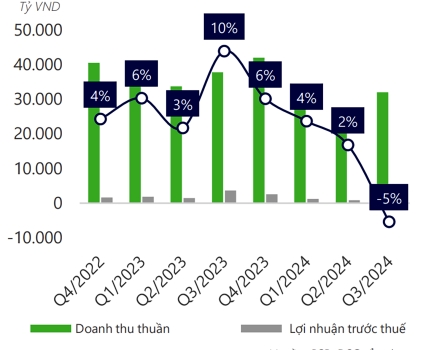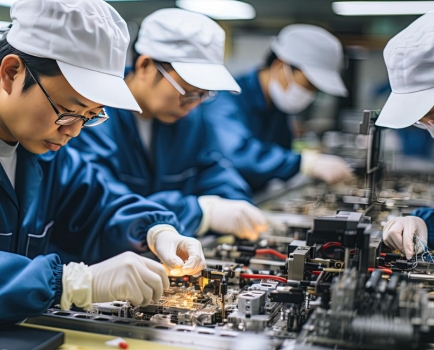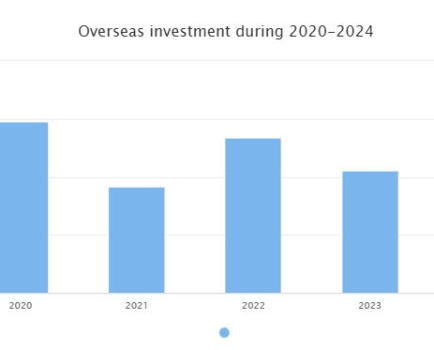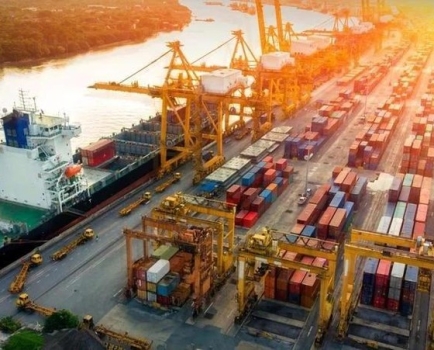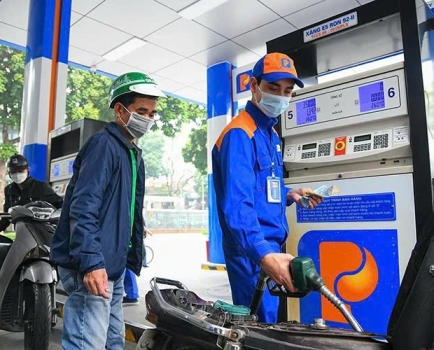How Vietnam produces its domestic Covid-19 vaccine
Sat, 12 Dec 2020 18:34:00 | Print | Email Share:
Covid-19 vaccine Nanocovax is created using auto-assembly lines, along with stringent disinfection and quality check processes.
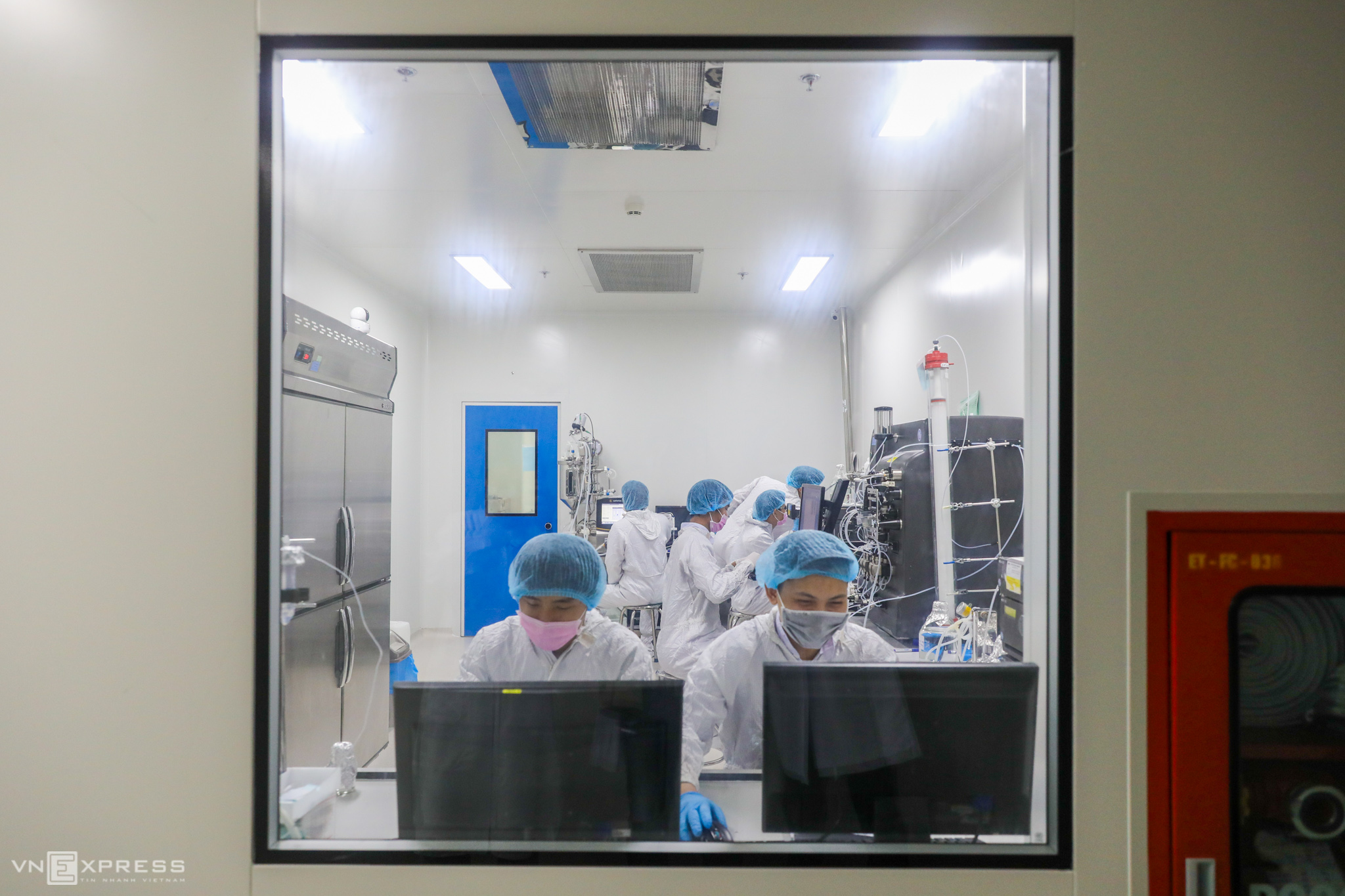
Technicians extract and purify protein, an important step in vaccine production.
Since June, around 300 employees of Nanogen Pharmaceutical Biotechnology JSC in HCMC's District 9 have focused on producing Nanocovax, a Vietnamese Covid-19 vaccine. Requested by the Ministry of Science and Technology, the vaccine utilizes recombinant protein technology.
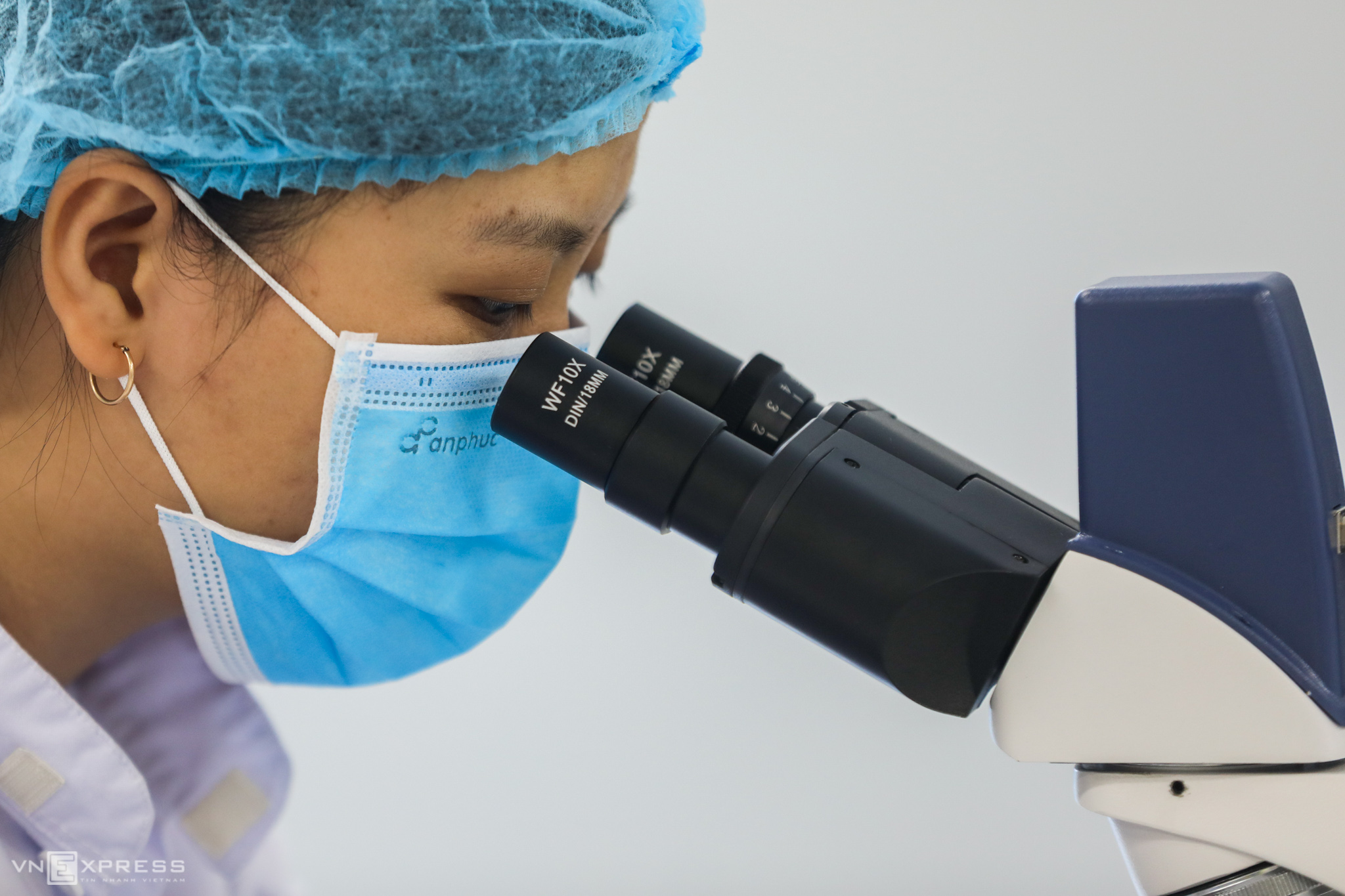
A medical worker examines cell growth. Cells are cultivated in large vats, with a capacity of 200 liters each.
Coding for spike proteins in SARS-CoV-2 are integrated into an animal cell line cultured by Nanogen. As the cells grow and divide, more viral spike proteins are produced. Isolated and purified proteins serve as vital ingredients in producing the vaccine.
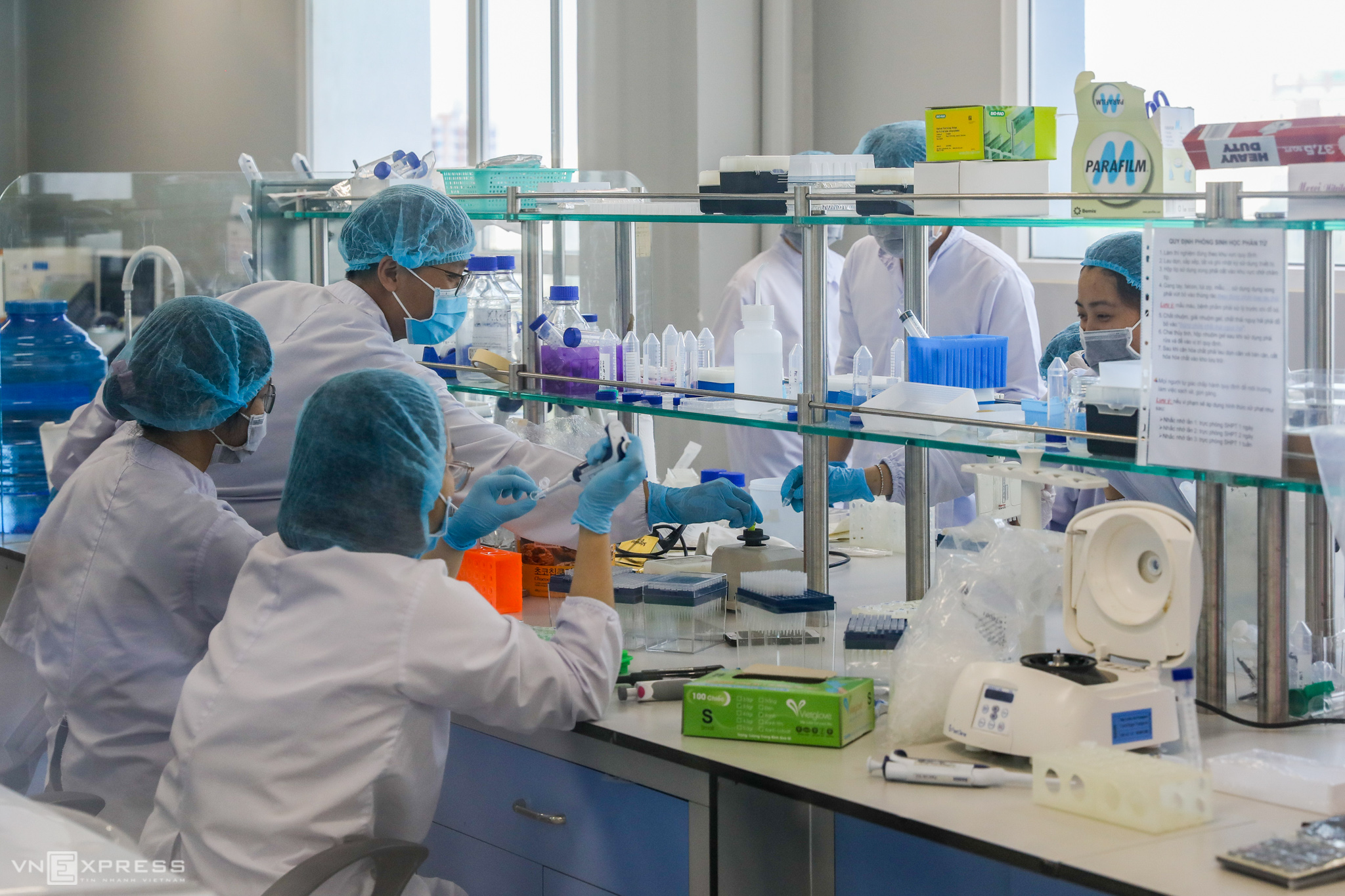
In a molecular biology room, staff test the purity of extracted protein before combining them with other excipients to produce the vaccine. Proteins that pass the test would be shipped directly to the manufacturing area.
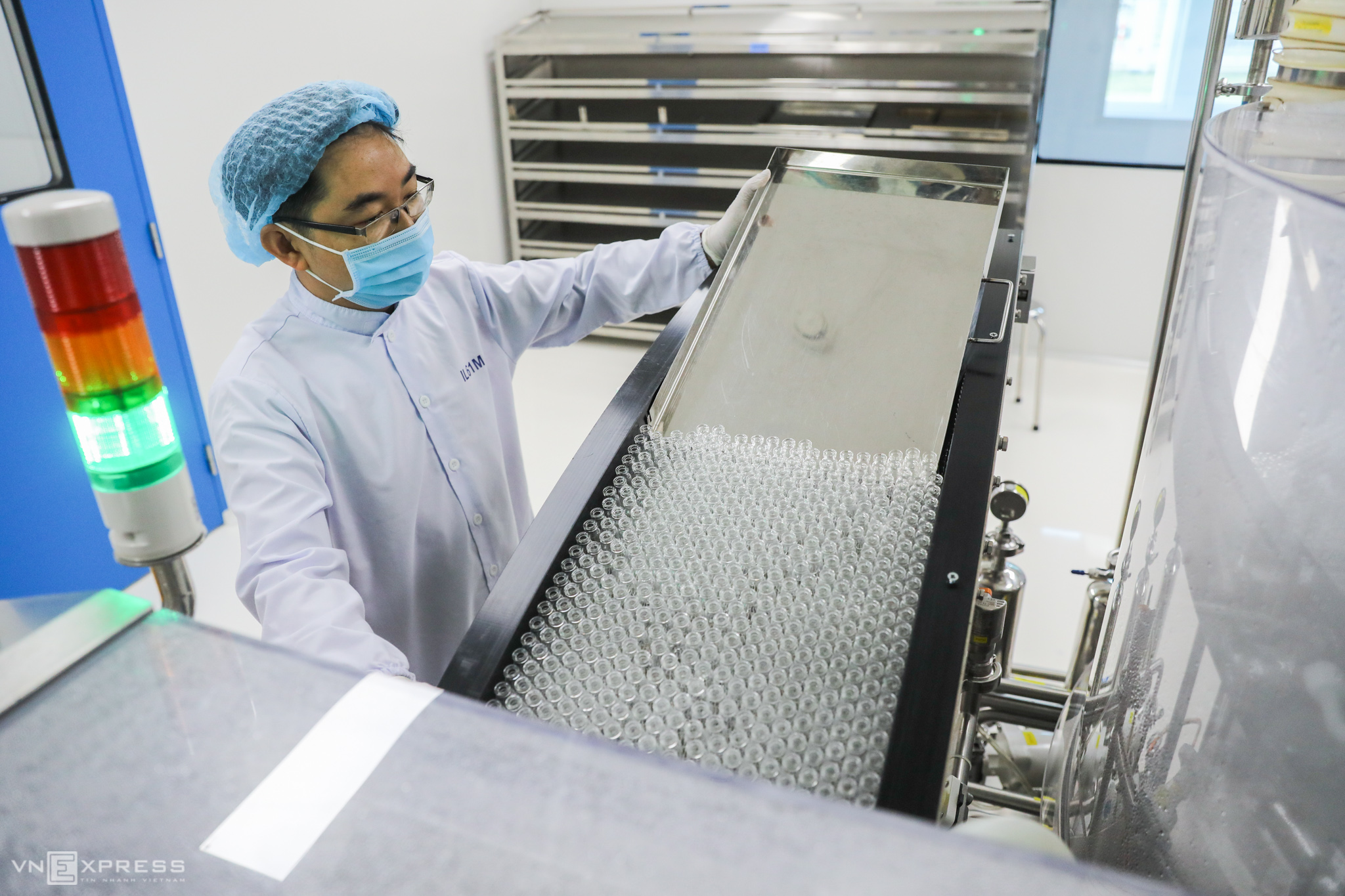
Following research, the Nanocovax vaccine is mass produced on an auto assembly line. Steps include the cleaning and disinfection of glass vials, dose measurement, quality checks, cold storage and labeling.
No one is allowed to directly make contact with the vaccine, except during pre-creation stages when raw materials need to be supplied manually, and when the vaccine enters cold storage.
Each assembly line has a capacity of 2,000 vials.
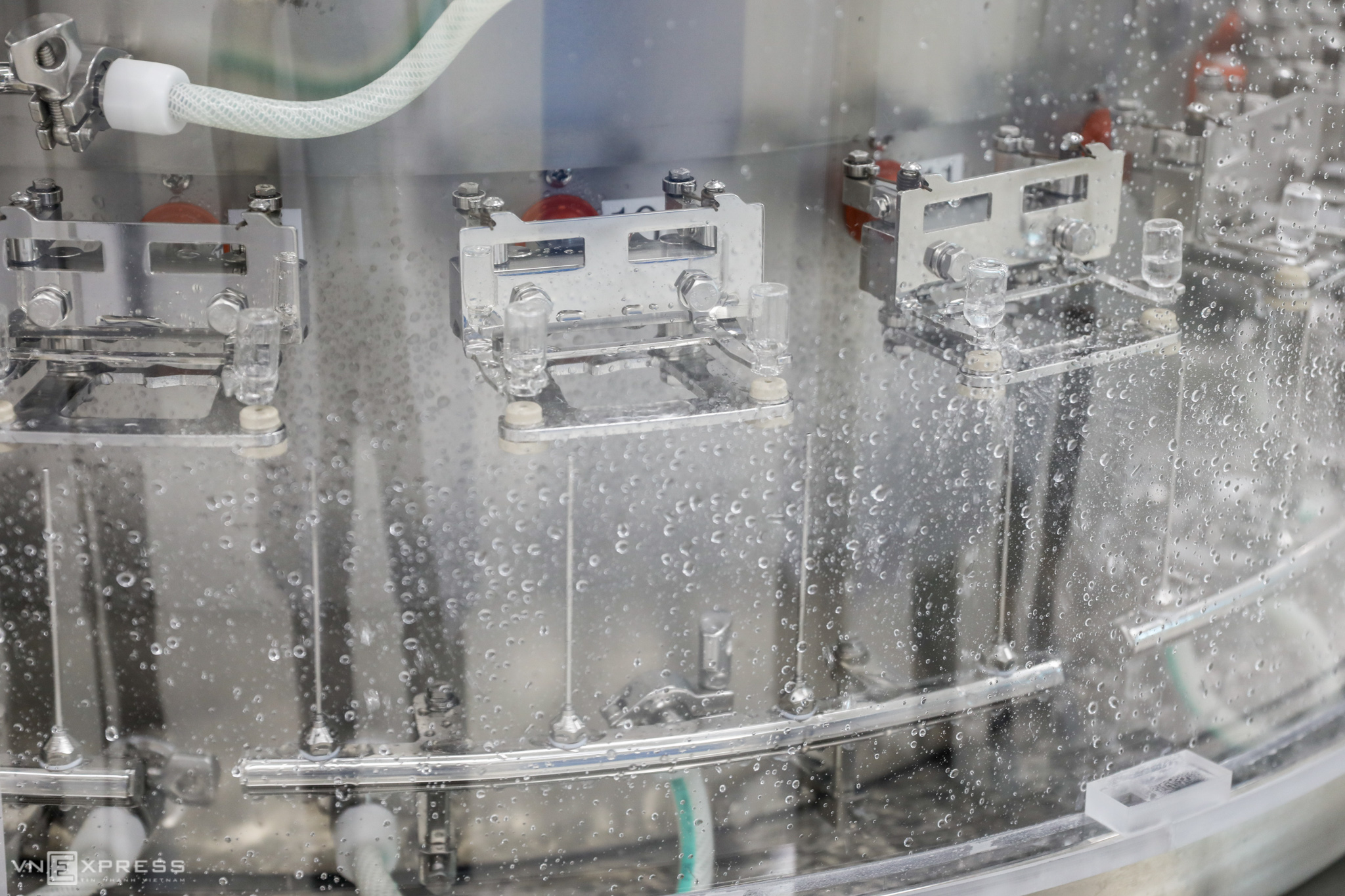
Glass vials are cleaned using pure water, dried with pressurized air and disinfected by blowing air at 300 degrees Celsius for at least 30 minutes.
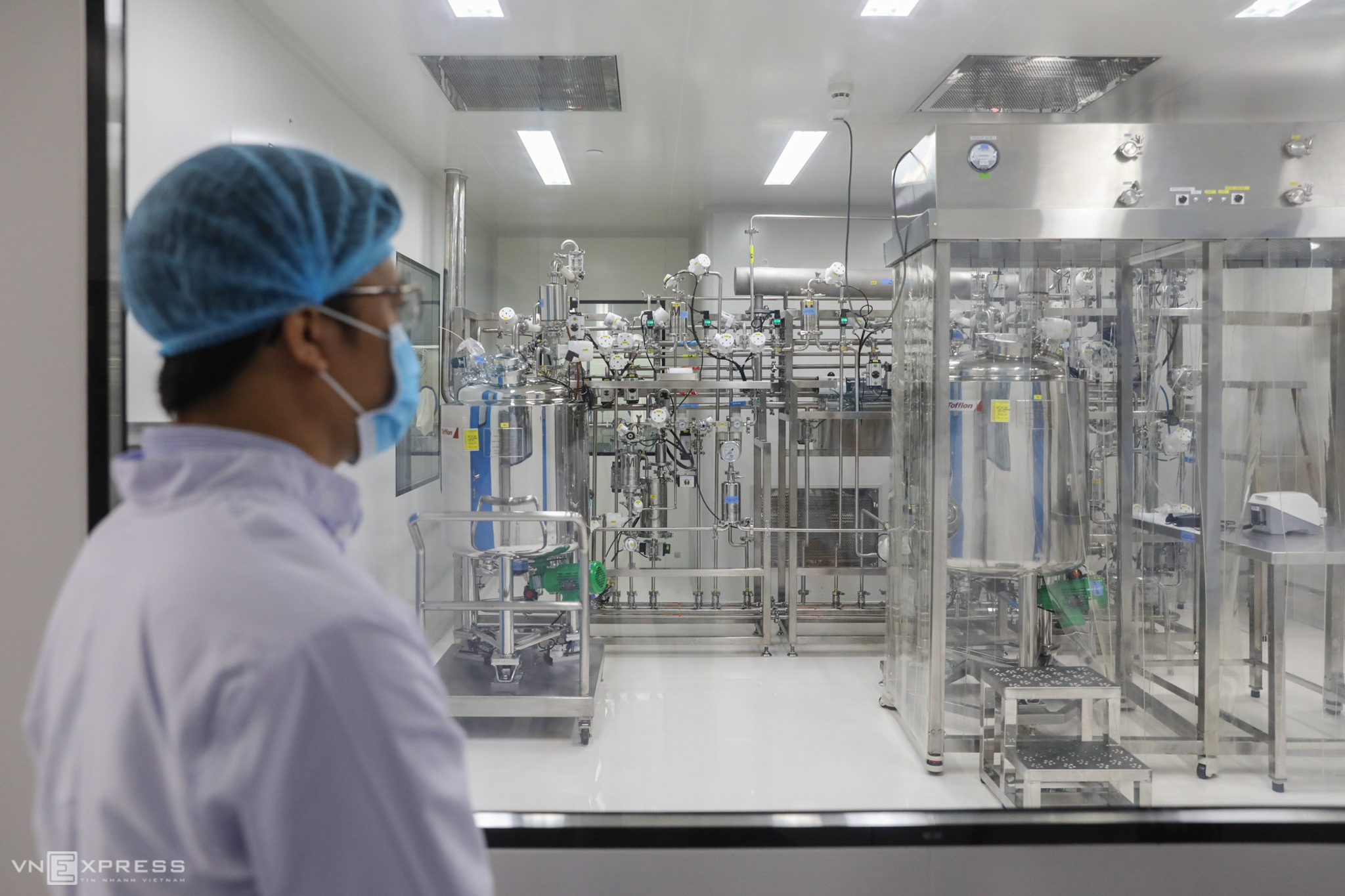
Tran Van Truong, head of the production management department, stands outside the vaccine creation room to monitor the process. Access to the room is restricted, and anyone entering must wear special protective suits.
Technicians combine proteins and excipients in accordance with a determined formula on pre-programmed and encrypted machines. Operators access the system with personal accounts and passwords, having no administration rights to interfere with its actual stats to prevent human errors. As the vaccine is produced, quality assurance personnel are always present to monitor progress.
"This is the most important stage in producing the vaccine. There is no room for even the smallest errors," Truong stressed.
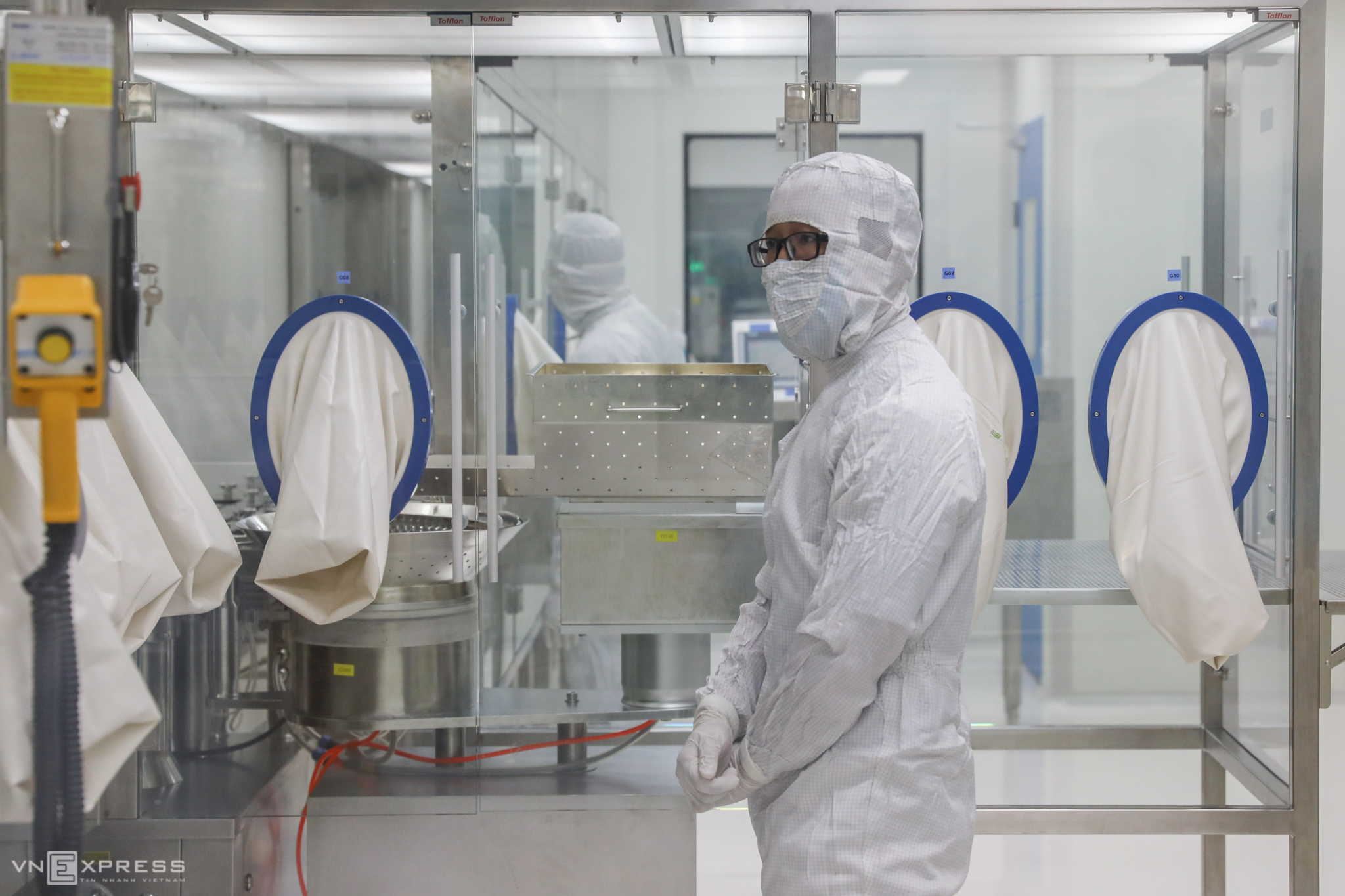
Following production, the vaccine is put into vials in accordance with their proper dosage.
The room where this occurs must be free of all impurities, with operators clothed in two-layer protective suits, etc.
Should something go wrong, technicians can manually interact with the system via sets of gloves installed on the panel.
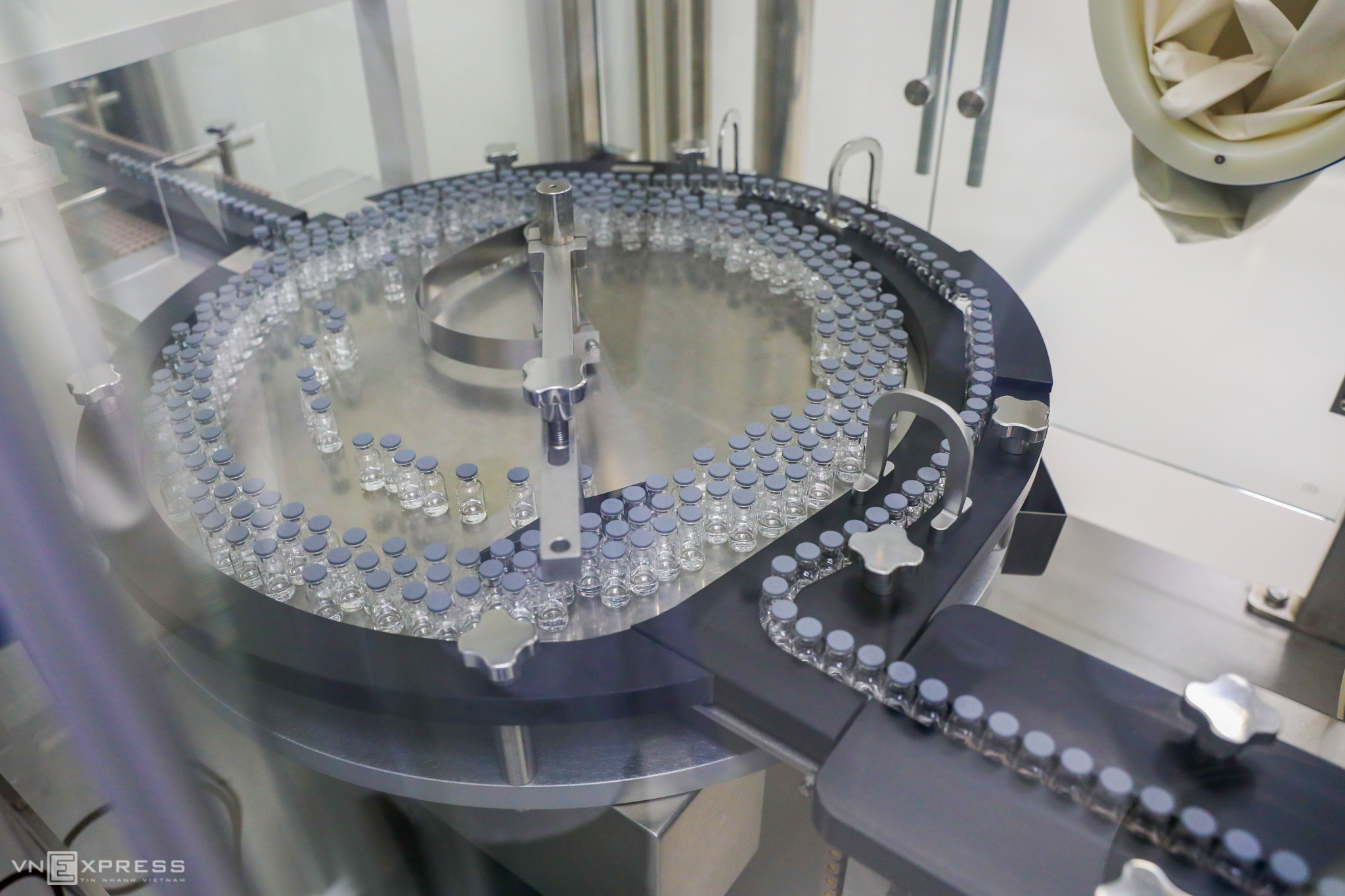
Vaccine vials are sealed with aluminum and rubber caps.
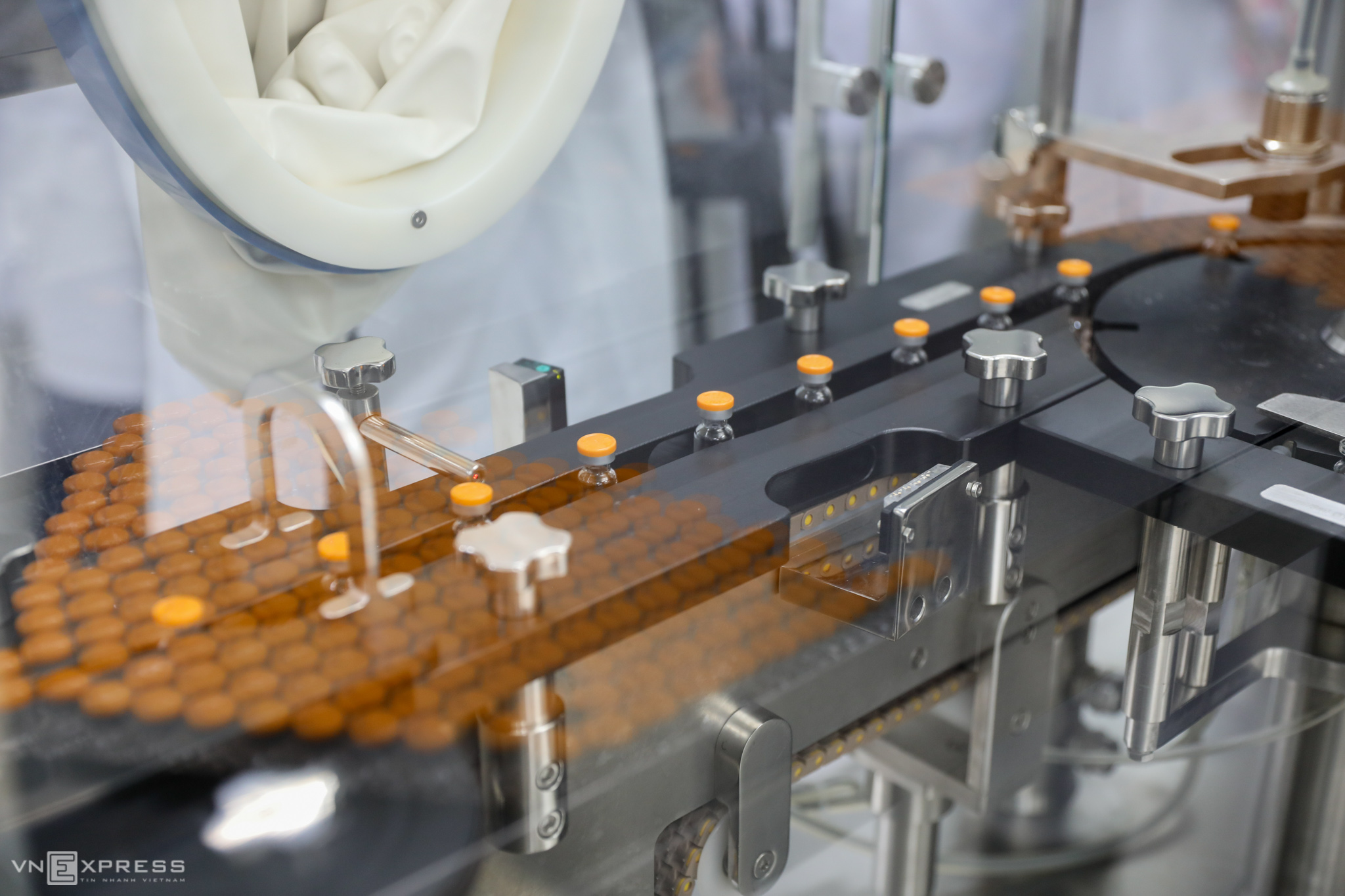
As aluminum caps are put on vials, machines automatically count the number of vaccines. Quality assurance personnel are stationed at the end of the line to spot and remove any faulty vial.
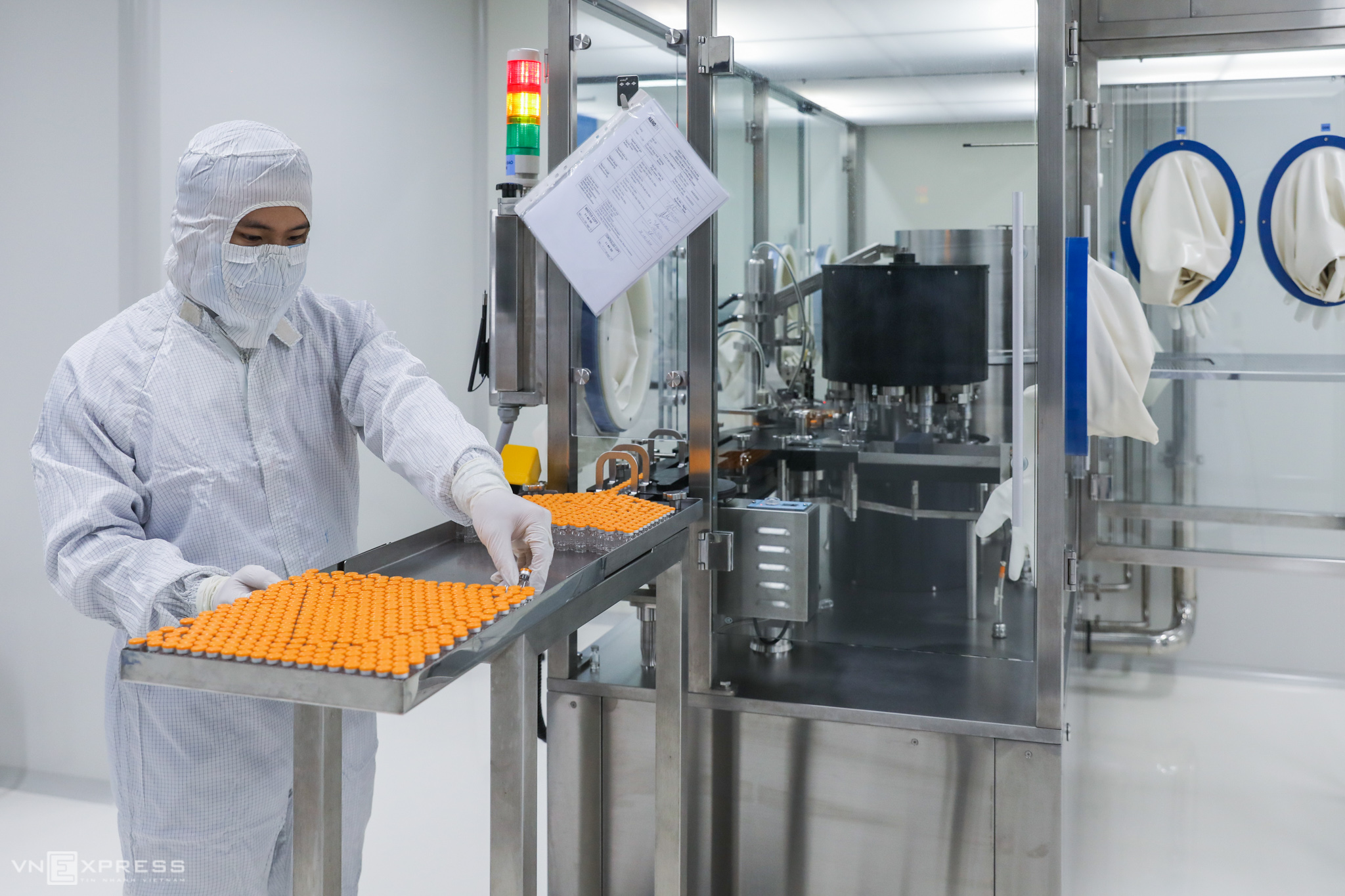
Complete batches are placed into cold storage, between 2-8 degrees Celsius. After further quality checks, vials are labeled, packaged and put away for storage.
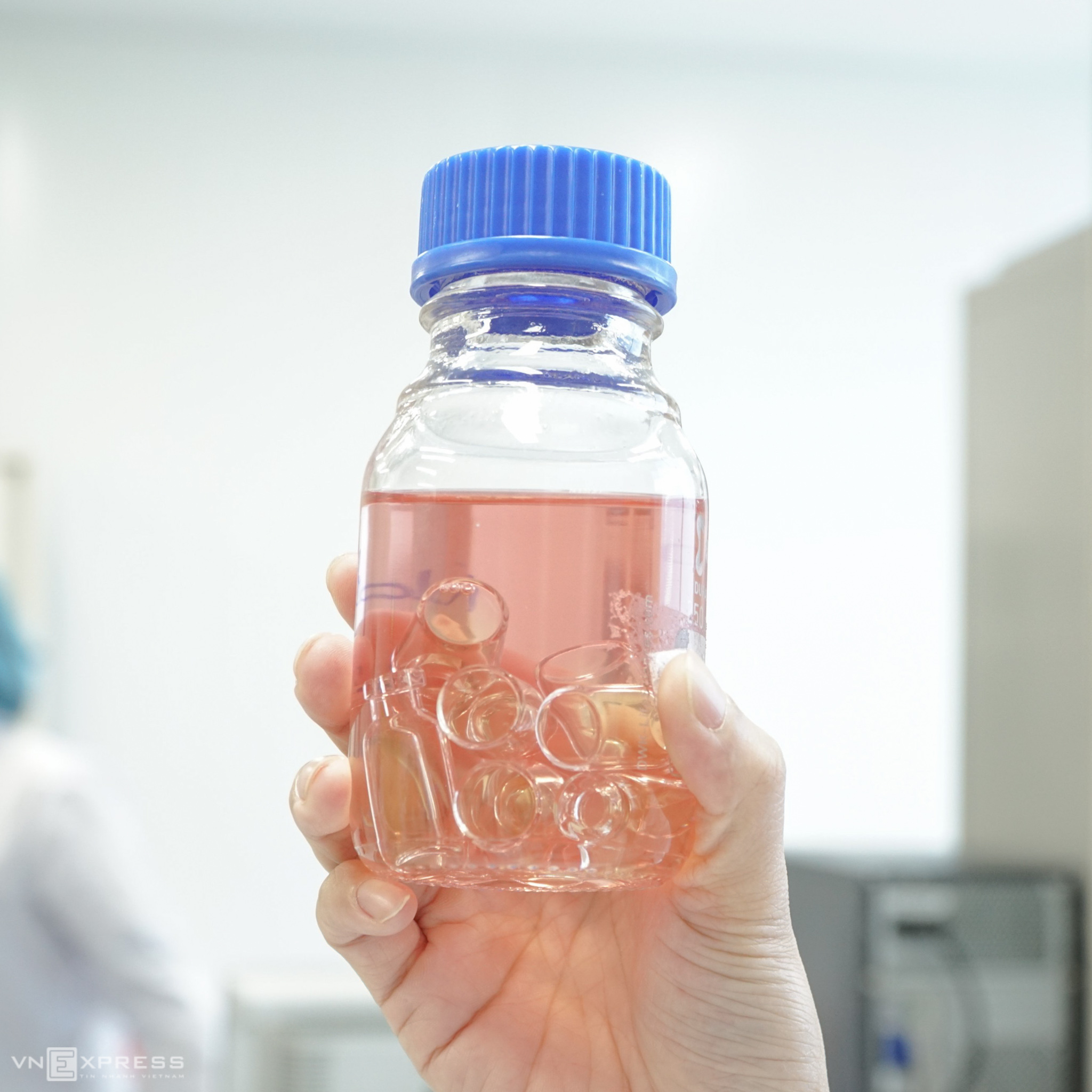
One quality check involves submerging the vials in special containers to see if they are truly disinfected. Quality assurance personnel would randomly pick out certain vaccine vials and take them for culture. They are put into a special substance for 18 days. If the substance turns murky or changes color, the vials would be deemed faulty and be removed.
Other tests help determine the vaccine's purity and toxicity.
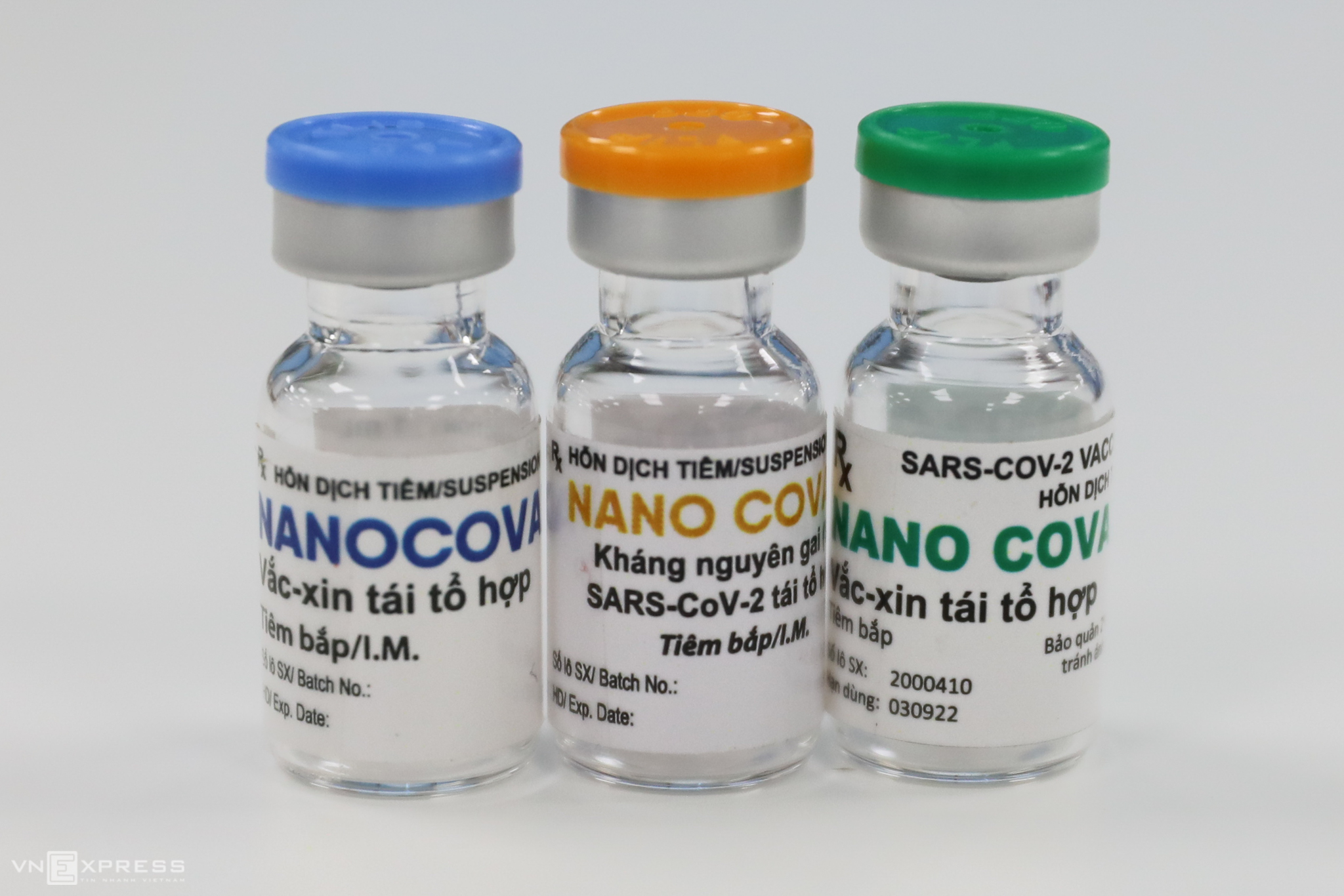
Nanocovax comes in three dosages: 25 mcg, 50 mcg and 75 mcg. Human trials commenced Thursday, with the first shots expected on December 17. If human trials prove successful, mass distribution could begin in May next year.
Each vaccine dose would require two shots, 28 days apart. Each dose would cost VND240,000 ($10.40). The vaccine would be injected intramuscularly.
Nanogen said its current production capacity is 20 million doses a year, which could be increased to 50 million doses.
By: Quynh Tran, Thu Anh/VnExpress
Source: https://e.vnexpress.net/photo/news/how-vietnam-produces-its-domestic-covid-19-vaccine-4205025.html
---------------------------------------------
Same category News :



